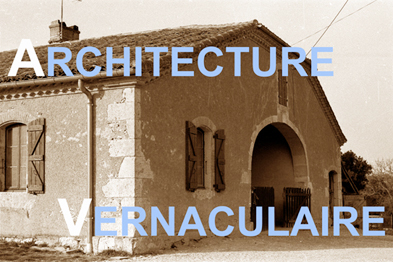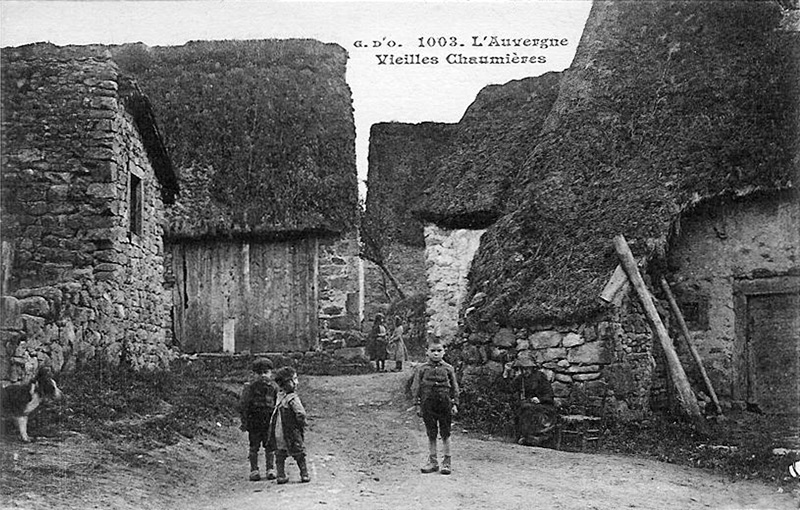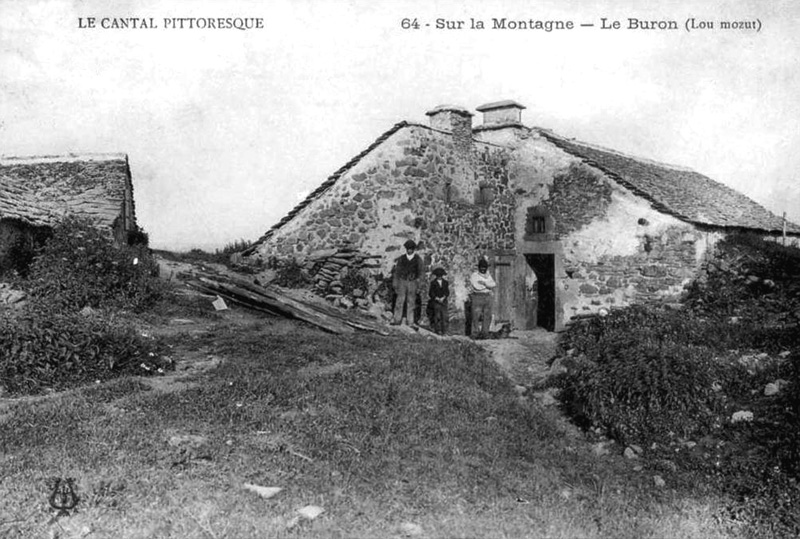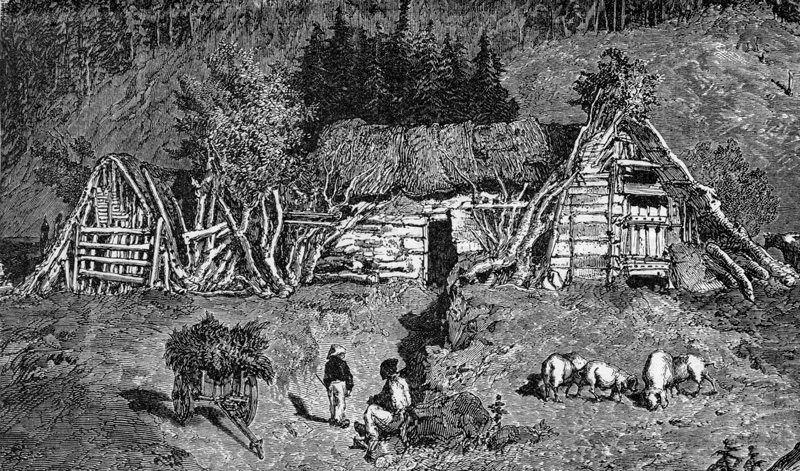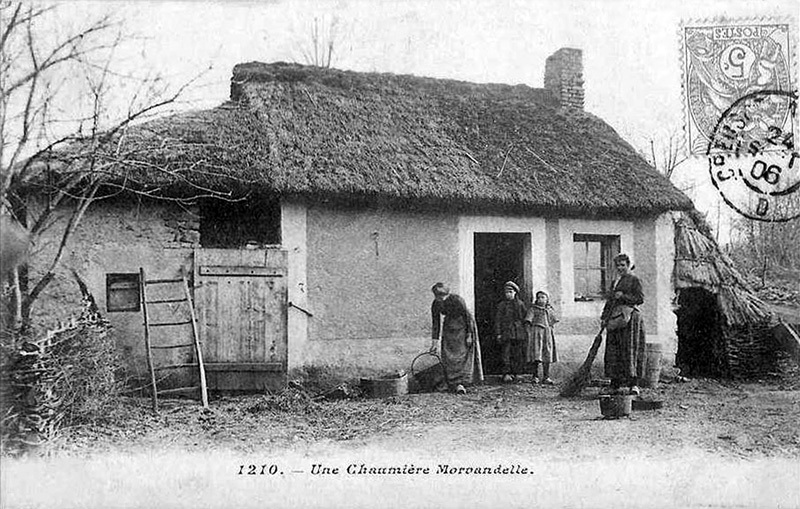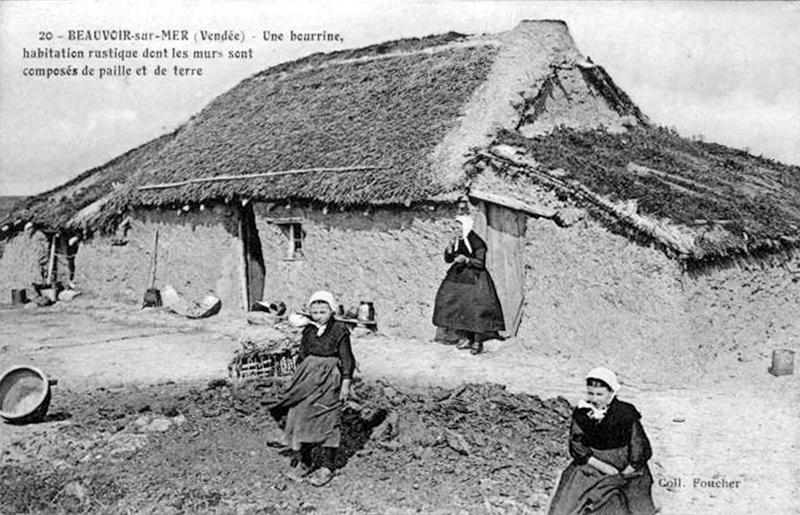A NEW MYTH: "ANCESTRAL ARCHITECTURE" Christian Lassure
Everyone knows how popular the phrase "architecture traditionnelle" ("traditional architecture") has been in this country in the last few decades, peddled that it was by various agencies (1) to designate what is merely, upon analysis, the residual living and agricultural quarters of the French peasantry in its Golden Age. The result of a building or rebuilding process lasting throughout the 19th century and even in the early 20th century, these edifices followed the designs and fashions propagated by the urban middle class and made use of materials extracted from newly-opened quarries and ferried along newly-created arteries (2). The new roofing materials – clay, stone or slate tiles – favoured by insurance companies to replace fire-friendly thatch, were subsequently elevated to the rank of "matériaux traditionnels" ("traditional materials") as by the stroke of a magic wand.
In this incipient 21st century, it would seem that the once so helpful but hackneyed adjective "traditionnel" ("traditional") needs to be replaced by a term that better suits the prevailing mood and current craze about "racines" ("roots"), "ancêtres" ("ancestors") (a mere few millions going back to King Saint Louis...). A newfound successor is already in the pipeline: it is no less than the adjective "ancestral" ("ancestral"), which has started popping up in the brochures supplied by real estate agents, tourist homes, provincial hotels, building companies as well as in the articles of their mouthpieces in the printed and online presses. If one visits the Internet site of the "Hôtel-restaurant de la Vallée" at Saint-Chély-d'Aubrac, Aveyron (3), one learns that "autour du village, les fermes et les burons ont gardé une architecture ancestrale, avec leurs murs en basalte ou en granite et leur toit de lauzes" ("around the village, farmhouses and cheese-making barns have retained their ancestral architecture, with their basalt- or granite-built walls and stone tile roofs"). One only has to replace "ancestral" ("ancestral") with "traditionnel" ("traditional"), and the sentence goes down just as fine and the meaning is unchanged.
Another example is provided by the site "Le magazine info", in which a journalist, who has immersed herself into "the very heart of the Cevennes" ("au cœur des Cévennes"), writes about her "wonderment accruing from the ancestral Cevenole architecture" ("émerveillement qui est enrichi par l’ancestrale architecture cévenole"), namely "the granite-built hamlets with their tiled roofs that cling to mountain slopes" ("les hameaux en granite aux toits de tuile, accrochés au versant des montagnes" (4). Such is her amazement that she places the adjective "ancestral" right before the noun for more cogency and relief. Moving on to a personal site dedicated to the ecstatic promotion of tourism in the Luberon region – a site made up of odds and ends gleaned online –, one learns that "in the heart of the village [of Sivergues], there spring into view the witnesses of an ancestral rural architecture such as the passageway under a vault used for accessing a first floor usually reserved for domestic use" ("au cœur du village [de Sivergues], surgissent des témoignages d’une architecture rurale ancestrale comme ce passage sous voûte permettant d’accéder à l’étage, en général réservé aux communs ») (5). First of all, one finds it difficult to see why such a passageway under a vault – shown by a photo to be a flight of steps over an arch pitted at a right angle against a façade – should be more "ancestral" than the rest of the building. Then, one cannot help being skeptical as to the ability of a passageway under a vault to allow access to a first floor as efficiently as a passageway over a vault. In order for the reader to really grasp who the ancient originators of that architectural contraption are, the author adds that "this type of construction is commonly found in the villages of the so-called 'Valdese' valley in Piémont and Dauphiné" ("le type de construction est fréquent dans les villages des vallées dites ' vaudoises ' du Piémont et du Dauphiné"). To wind up this short tour of "ancestral architecture" ("architecture ancestrale"), mention is to be made of a page published by the wine-pushing "Ochato" site to vaunt the products of the Domaine de la Tour Vieille (the Ancient Tower Estate) in the Roussillon region. This estate is presented as "endeavouring to perpetuate the ancestral architecture of wine-growing terraces retained by dry stone walls, born of years of unceasing toil" ("s’évertue à perpétuer l’architecture ancestrale des vignes en terrasses soutenues par des murets de pierres sèches, fruit d’un labeur incessant"). There we are, the term "ancestral" is being applied not only to the architecture of village and farm houses, but also to purely agricultural structures! What will be next? The reason for labelling as "ancestral" a trademark created in 1982 after the merger of two estates, the one in Collioure, the other in Banyuls, is provided in the same breath: "the viticulturist did no wish to alter his ancestors' work conditions" ("Le vigneron n’a pas souhaité modifier les conditions de travail de ses ancêtres") (something the latter will be relieved to hear as they can now rest in peace...). There is no dearth of quotations like these as their number increases by the day. It suffices to say that branding as "ancestral architecture" the rural buildings that have managed to survive the flight from the land, the emptying of the countryside, revamping to the standards of the age, is just another way of saying that these buildings are ageless, hystoryless, from time immemorial, when in fact they are those of the upper layers of the rural population and, as a result, the more resistant and durable structures. On the other hand, the more shoddy and fragile buildings of the rural proletariat, the first to have been deserted, have been obliterated for the most part (7).
One may wonder where the phrase "architecture ancestrale" ("ancestral architecture") comes from. It would seem that it originated in French-speaking Quebec where it is not unfrequently used. The high number of occurrences encountered in the Internet sites of The Belle Province leaves one in no doubt. For instance at La Petite-Rivière-Saint-François in the Charlevoix county, a "cottage whose ancestral architecture dates from 1882" ("chalet à l’architecture ancestrale datant de 1882") is for rent (8). Although the somewhat recent date may come as a surpise to a European more accustomed to a history that spans two milleniums, to a Quebecker who can boast a history only 400 years old, 1882 is quite far back in time. Casual research done with the Google search engine turns up "l’architecture ancestrale des maisons" ("the ancestral architecture of the houses") [in the town of Quebec], "le (…) village de Pointe-au-Pic (…) avec son architecture ancestrale" ("the village of Pointe-de-Pic with its ancestral architecture"), "une architecture ancestrale aux allures européennes" ("an ancestral architecture reminiscent of Europe"), etc. The adjective "ancestral" is also found in connection with "maison" ("house") : "au centre du village [de Stanbridge-East dans la région des Cantons-de-l’Est], entouré de maisons ancestrales fidèles au style américain du 19ième siècle, avec une forte présence de la brique et du bois peint" ("in the centre of the village [of Stanbridge-East in the Cantons-de-l'Est area], surrounded by ancestral houses conforming to the 19th-century American style, with predominating brick and painted wood") (9). Finally, the phrase is also encountered in francophone Switzerland: "La région d'Evolène [dans le Valais] (...), constellée de villages et hameaux, surpend le visiteur par la beauté de ses paysages, son architecture ancestrale et l'esprit d'ouverture de ses habitants" ("dotted with villages and hamlets, the Evolène area [in the Valais region], has its visitors stand in awe at its beautiful scenery, ancestral architecture and the openness of its inhabitants") (10). The term "ancestral" is even applied to dry stone walls : "La construction de ces murs est un art ancestral" ("Building these dry stone walls is an ancestral tradition"), to quote the Actions en faveur de l'Environnement Foundation (11). A bright future awaits "ancestral". It already is a favourite with the merchants that vaunt their products in the Internet: straw wine, roof shingle, cognac, lime putty, brick, you name it. NOTES (*) Ancestral - 1853 (1) A feature these agencies share in common is their systematic use of verbs like "respecter" (to respect), "protéger" (to protect), "défendre" (to defend), "sauvegarder" (to safeguard), "sauver" (to rescue), "mettre en valeur" (to bring out the value of) (and the latter's offshoot "valoriser"). (2) See Christian Lassure, L'intangible trinité : la maison « traditionnelle », la maison « de pays », la maison « paysanne » (An Undebunkable Trio: the "Traditional" House, the "Local" House, the "Peasant" House), in L'architecture vernaculaire, vol. 8, 1984, pp. 75-82. (Also accessible on line at http://www.pierreseche.com/intangible trinite.htm.) (3) Online address: http://www.lavallée-stchely.com/tourisme.php+architecture+ancestrale… (4) Online address: http://www.lemagazine-info/spp.php?article192 (5) See http://depenne.club.fr/texte/sivergue.html. The same site alleges that the "plateau des Claparèdes" at Bonnieux is called "plateau des bories"… (6) See http://www.ochato.com/productions/Domaine-de-La-Tour-Vieille-Languedoc-Roussillon 42.html. (7) Let alone the shelters, cabins and huts of the rural working class of the 19th century, now only a distant memory (except for those that were lucky to catch the eye of the photographers of early 20th century postcards).
(8) We will refrain from divulging their address as it is already all over the place. (9) See http://www.beauxvillages.qc.ca/français/villages/stanbridge.html (10) See http://www.livredemontagne.ch/site.html (11) See http://www.umwelteinsatz.ch/index-fr.htm To print, use landscape mode © CERAV The above article will be referenced as follows: Christian Lassure
|
